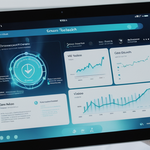
Executive Summary: This comprehensive guide provides travelers with a detailed packing checklist for selecting, configuring, and deploying Virtual Private Networks (VPNs) for secure internet access while traveling internationally. The report addresses critical considerations including pre-travel preparation, VPN selection criteria based on security architecture, encryption standards, multi-device compatibility, regional legal restrictions, and on-the-road best practices. Based on extensive analysis of contemporary VPN security implementations, this checklist enables travelers to establish a robust privacy gateway before departure, mitigate exposure on unsecured networks, and maintain continuous protection across shifting connectivity scenarios. The research reveals that proper VPN preparation substantially reduces vulnerability to man-in-the-middle attacks, ISP monitoring, and data interception while traveling, with security effectiveness directly correlating to deliberate pre-travel configuration and adherence to established deployment protocols.
Understanding the VPN Travel Gateway Framework
The concept of a VPN packing checklist represents a fundamental shift in how modern travelers approach cybersecurity preparedness. Rather than downloading a VPN application upon arrival in a foreign destination—a practice that creates dangerous exposure windows—the comprehensive checklist approach requires travelers to complete all critical preparation steps before departure from their home network. A VPN functions as a secured gateway by creating an encrypted tunnel through which all internet traffic flows, effectively hiding the user’s actual IP address and location from ISPs, network administrators, and potential eavesdroppers. This gateway architecture proves particularly essential in travel contexts where internet connections occur across multiple unsecured networks including airport Wi-Fi, hotel networks, and public cafes, each presenting distinct security vulnerabilities. The gateway approach transforms sporadic VPN usage into systematic, always-on protection through careful advance preparation and intelligent configuration.
The distinction between theoretical VPN security and practical travel security hinges upon advance preparation. Research demonstrates that travelers who establish VPN infrastructure before departure experience significantly fewer security incidents compared to those who download and configure VPNs after arriving abroad. The delay in implementation creates exposure windows where sensitive account credentials, banking information, and personal communications remain vulnerable to interception. Furthermore, downloading VPN applications from foreign app stores or websites introduces additional risk if those distribution channels have been compromised. The packing checklist approach systematizes travel preparation, transforming VPN security from an afterthought into a coordinated element of comprehensive travel safety planning.
Pre-Travel Verification: The Foundation of VPN Gateway Security
Selecting Your VPN Provider with Security-First Criteria
The first critical step in the travel packing checklist involves selecting an appropriate VPN provider well in advance of departure. This selection process requires evaluating providers across multiple security dimensions beyond simple marketing claims. No-logs policies represent a fundamental security requirement, yet many providers make claims about logging practices that independent audits later contradict. When evaluating no-logs claims, travelers should prioritize VPN providers that have undergone recent third-party security audits by reputable firms such as Deloitte or Cure53, with audit reports published within the last twenty-four months. These audits examine whether the provider’s technical architecture actually prevents logging at the hardware level, rather than relying solely upon policy documents.
The VPN provider’s jurisdiction significantly impacts security outcomes, particularly regarding cooperation with government data requests and membership in intelligence-sharing alliances. Providers headquartered in countries that are members of Five Eyes, Nine Eyes, or Fourteen Eyes alliances face greater pressure to retain user data and comply with government surveillance requests, even if their privacy policies claim otherwise. Jurisdictions such as Panama, Romania, Switzerland, and the British Virgin Islands demonstrate stronger legal protections for user privacy, though legal protection becomes irrelevant if the provider lacks technical architecture to prevent logging. Travelers should verify both the provider’s stated jurisdiction and their actual corporate structure, as some providers claim privacy-friendly headquarters while routing operations through less protective jurisdictions.
NordVPN emerges from current research as the leading option for travelers, offering 7,800+ servers across 118 countries with exceptional speed performance and a verified no-logs policy supported by multiple independent audits. The service supports up to ten simultaneous device connections, critical for travelers carrying multiple devices, and includes additional security features such as built-in malware protection and an ad-blocking tool that function independently of the VPN connection. ExpressVPN represents a strong alternative, particularly for users prioritizing intuitive interface design, with 3,000+ servers across 105 countries and support for eight simultaneous connections. Surfshark distinguishes itself through unlimited simultaneous device connections and aggressive pricing starting from $2.19 monthly, making it particularly suitable for large families or users with numerous devices. ProtonVPN offers a legitimate free plan with multiple server locations, though its free tier limits functionality to a single device.
Encryption Architecture and Security Protocol Verification
The encryption standard employed by a VPN provider represents a non-negotiable element of the security infrastructure. AES-256 encryption, the current industry standard utilizing 256-bit keys, provides military-grade protection that would theoretically require billions of years to crack using contemporary computing power. The “256” in this standard refers to the encryption key size, with larger key sizes demanding exponentially greater computational effort to compromise through brute force attacks. Travelers should verify that their selected VPN provider implements AES-256 encryption as the standard rather than optional feature. Providers offering weaker 128-bit encryption may advertise faster speeds, but the security tradeoff proves unacceptable given that modern laptops and mobile devices easily handle 256-bit encryption overhead with minimal speed degradation.
Beyond the encryption algorithm, the VPN protocol—essentially the technical method by which encryption occurs—fundamentally affects both security and performance. OpenVPN, built upon established open-source standards, provides strong security with proven resistance to attacks and maintains transparency through community review. WireGuard represents a newer protocol offering faster connection negotiation while maintaining strong security properties. IKEv2/IPsec, primarily used in enterprise environments, provides reliable performance though with higher complexity. Secure Socket Tunneling Protocol (SSTP), developed by Microsoft, offers the advantage of operating over standard HTTPS ports (TCP 443), making it difficult for restrictive firewalls to block, though it remains primarily designed for Windows systems. Travelers should select providers offering multiple protocol options, enabling them to switch protocols if their current connection faces throttling or blocking from local network administrators.
Kill Switch Technology: The Essential Safety Mechanism
The kill switch represents a critical security feature that must be explicitly verified during pre-travel preparation. This feature functions as an automatic circuit breaker, cutting all internet traffic the moment the VPN connection drops, preventing any data transmission through the unencrypted connection. Without an active kill switch, a temporary VPN disconnection—caused by weak Wi-Fi signal, switching between networks, or server failures—exposes user data without the traveler’s knowledge, potentially compromising banking credentials or sensitive information entered during the unprotected interval. System-level kill switches block all device traffic, providing absolute protection but potentially interrupting work flows, while application-level kill switches allow selective blocking of specific applications like browsers or email clients, providing more granular control while accepting slightly higher risk.
Critically, kill switch technology requires deliberate activation before use; many VPN applications ship with kill switches in disabled status, requiring users to manually enable the feature within application settings. The pre-travel checklist must include verification that kill switch functionality has been explicitly activated on all devices before departure. This verification should include a functional test whereby users disconnect their VPN manually and confirm that the kill switch successfully blocks internet traffic, ensuring the mechanism actually functions rather than assuming functionality based on availability. Travelers should take particular note of whether their VPN provider offers automatic kill switch activation on unsecured networks, a convenience feature that reduces reliance on user memory to manually enable protection when connecting to public Wi-Fi.
Device Compatibility and Multi-Device Strategy
Platform Support Assessment
Before purchasing a VPN subscription, travelers must verify that their specific devices receive complete support across all platforms they will carry. A VPN service may offer excellent macOS applications while providing substandard Android implementations, or vice versa. The pre-travel checklist should systematically address each device: smartphones (iOS or Android versions), tablets (compatible versions of mobile OS), laptops (Windows, macOS, or Linux versions), and any specialized devices such as Amazon Fire TV devices or gaming consoles if the traveler anticipates using these devices for streaming. Developers constantly update VPN applications, and support for particular operating systems changes over time; what functioned flawlessly two years ago may no longer receive developer support.
Travelers should install and test the VPN application on each device while still at home, before travel begins. This testing process reveals several critical issues: whether the application installs successfully, whether it launches without errors, whether the user interface makes intuitive sense for that particular platform, and whether the application successfully connects to test VPN servers without difficulty. Testing at home, with professional IT support resources available if needed, proves vastly preferable to encountering installation failures in a foreign hotel room with limited technical support access. The testing phase should specifically verify that all devices can simultaneously connect to the VPN if the subscriber plan permits multiple concurrent connections, ensuring that the theoretical maximum device count translates to practical functionality across all devices.
Simultaneous Connection Limits and Router Configuration
The number of simultaneous connections allowed under a VPN subscription represents a critical practical consideration that many travelers underestimate. Standard VPN plans typically permit 5 to 10 simultaneous connections per account, though some providers like Surfshark offer unlimited simultaneous connections. A traveler carrying a smartphone, tablet, and laptop will consume three simultaneous connections, leaving minimal capacity for additional devices or family members. Many hotels and transportation situations involve unavoidable disconnections and reconnections as the traveler moves between networks, and managing limited connection slots becomes frustrating when trying to access multiple devices simultaneously.
A sophisticated pre-travel strategy for multi-device scenarios involves VPN router configuration, wherein the VPN application is installed on a travel router rather than individually on each portable device. Travel routers are compact, battery-powered devices designed specifically for secure portable networking, and configuring the VPN on the router effectively uses a single subscription connection to protect all devices connected to that router’s Wi-Fi network. This approach provides several advantages: reducing simultaneous connection consumption, simplifying device management (only one connection to maintain rather than multiple), ensuring consistent VPN protection across all devices, and eliminating the need to individually trust the router’s own network security. Travelers planning this approach should pre-verify that their selected VPN provider supports their specific travel router model, then configure the router while at home where technical support and internet resources remain readily available.
Encryption Protocols and Technical Verification

Understanding the VPN Encryption Pipeline
Effective travel security requires comprehending how VPN encryption actually functions across multiple stages, rather than simply accepting the provider’s assertion that “encryption” occurs. The encryption pipeline begins with data packet creation, where information intended to be transmitted—email contents, browser requests, login credentials—is broken into smaller units called packets, each containing routing information specifying sender and receiver IP addresses. This preliminary stage leaves data vulnerable because no encryption has yet occurred. The second stage, encryption process, applies mathematical algorithms (such as AES-256) that transform readable data into unintelligible ciphertext that appears as random characters without the decryption key. The encryption process adds computational overhead but ensures that even if a packet is intercepted, the contents remain meaningless to the eavesdropper.
The third stage, tunneling, encapsulates the encrypted packets within additional protective layers and routes them through the secure VPN tunnel to the VPN server, preventing observation of packet contents or metadata by network administrators or ISPs. Multiple tunneling protocols achieve this encapsulation differently: OpenVPN encapsulates packets securely but with some overhead, while WireGuard uses more efficient encapsulation methods. The fourth stage, transmission, sends the encapsulated, encrypted packets across potentially untrusted internet infrastructure to the VPN provider’s servers, where no entity along the path can observe the actual data or determine the traveler’s original IP address. Finally, decryption occurs at the VPN server endpoint, where the provider’s servers decrypt the packets and forward them to their final destination (such as a banking website or email server), with the destination server receiving traffic appearing to originate from the VPN server’s IP address rather than the traveler’s actual location.
DNS Leaks and WebRTC Vulnerabilities
Even with robust VPN encryption in place, multiple attack vectors can circumvent the secure tunnel and reveal sensitive information. DNS leaks represent a critical vulnerability whereby domain name system queries—essentially, requests to translate website names into numerical IP addresses—escape the encrypted VPN tunnel and travel unencrypted to the traveler’s ISP or local network. A DNS leak reveals every website the traveler attempts to visit, defeating one of the primary privacy protections a VPN provides. The cause often involves Windows systems where individual network interfaces maintain separate DNS settings, and under certain circumstances the system sends DNS queries outside the VPN tunnel without respecting the routing table that should force all traffic through the VPN. Travelers can test for DNS leaks using online tools such as ipleak.net, which reveals whether DNS queries travel through the VPN provider’s servers or leak to external systems.
WebRTC leaks represent a second critical vulnerability unique to web browsers. WebRTC (Web Real-Time Communication) implements STUN protocols allowing browsers to discover public IP addresses, a functionality necessary for video conferencing and real-time communication features. However, this functionality can operate independently of VPN settings, potentially revealing the traveler’s actual IP address to websites even while connected to a VPN. Preventing WebRTC leaks requires disabling WebRTC functionality in browsers: Firefox users should navigate to “about:config” and set “media.peerconnection.enabled” to false, while Chrome users should install Google’s official “WebRTC Network Limiter” extension. This represents a critical pre-travel configuration step often overlooked, as the vulnerability remains invisible to users unless they specifically test for it.
Pre-Departure Configuration Procedures
Installation and Login Credential Management
The comprehensive pre-travel checklist requires downloading and installing the VPN application on all devices before departure. This installation should occur on the traveler’s home network where technical support and problem-solving resources remain readily available. If installation fails—due to incompatible operating system versions, missing dependencies, or hardware limitations—discovering this at home permits solutions such as updating the operating system, consulting provider support, or selecting an alternative VPN service. Installing VPN software for the first time in a foreign hotel while desperately needing internet access creates stress and pressure that rarely yields optimal problem-solving.
Following installation, travelers should establish a secure system for storing VPN login credentials and account information while traveling. Credentials should not be stored in simple text documents or email messages that remain accessible if the traveler’s device is compromised. Password managers such as NordPass, 1Password, or Proton Pass offer encrypted credential storage accessible across multiple devices, allowing secure retrieval of VPN credentials without compromising security through careless storage practices. The pre-travel phase represents the ideal moment to establish a password manager account, load all critical credentials and access information, and verify that the password manager successfully syncs across all devices to be carried while traveling. A secondary recommendation involves storing a printed copy of VPN account information (account email, subscription tier, recovery codes if available) in a secure location such as hotel safe or traveler’s lockbox, providing backup access if digital credentials become temporarily inaccessible.
Auto-Connect Configuration and Trusted Network Definition
Modern VPN applications offer auto-connect functionality that automatically activates VPN protection when the device connects to specific network types, eliminating reliance on user memory to manually enable protection. Pre-travel configuration should enable auto-connect features with appropriate parameters: connecting automatically to all unsecured networks (such as public Wi-Fi at airports and cafes), connecting automatically upon device startup, or connecting automatically when switching away from trusted networks. This configuration reduces cognitive load while traveling, as the VPN operates automatically without requiring conscious activation each time the traveler sits down at a cafe or connects to airport Wi-Fi.
The definition of “trusted networks” requires careful consideration during pre-travel setup. A trusted network typically includes the traveler’s home network and potentially the network at a permanent office location where the organization has implemented robust security measures. However, many travelers mistakenly classify hotel networks as trusted, when in fact hotel networks remain shared systems potentially accessible to malicious other guests or compromised through network administration accounts. The pre-travel checklist should explicitly document which specific networks qualify as genuinely trusted—essentially, networks where every connected device and all network administration has been personally verified as secure. In most travel scenarios, the traveler should configure auto-connect to treat all networks as untrusted, activating the VPN for every connection without exception.
Account Recovery and Backup Access
Travel situations frequently create scenarios where accessing one’s normal account becomes temporarily impossible—a lost phone, forgotten password, or account lockouts triggered by access from unusual geographic locations. The pre-travel preparation phase represents the ideal moment to establish backup access methods and document recovery procedures. Travelers should enable account recovery options such as recovery email addresses and recovery codes, storing recovery codes in physically separate locations (such as written in a physical journal) from primary credentials. This separation ensures that if a device is compromised and digital credential stores are accessed, the attacker cannot simultaneously obtain recovery codes necessary to regain account access.
Many VPN providers offer 30-day money-back guarantees, allowing travelers to test services risk-free before committing to a subscription. However, implementing such refund processes while traveling creates complications if issues only become apparent after arriving abroad. The pre-travel phase should clarify the provider’s refund policy, understand the specific conditions under which refunds can be obtained (typically requiring contact within 30 days of purchase), and document the customer support contact information. Should the VPN service prove inadequate during travel, knowing the refund procedures and having necessary documentation available enables rapid transition to an alternative service without loss of funds.
Travel-Specific Network Vulnerabilities and Mitigation
Understanding Man-in-the-Middle Attack Vectors
Travelers frequently connect to open, unsecured Wi-Fi networks specifically because such networks offer convenience without password requirements. However, this convenience introduces profound security risks through man-in-the-middle (MITM) attacks, where an attacker positioned on the same network intercepts communication between the traveler’s device and destination servers without either party’s knowledge. A basic MITM attack on unsecured Wi-Fi allows attackers to view transmitted data, harvest login credentials, and inject malicious content into websites before they display on the traveler’s screen. More sophisticated MITM attacks involve creating rogue Wi-Fi hotspots with names mimicking legitimate networks (such as “Free_Airport_WiFi” resembling “Free Airport WiFi”), deceiving travelers into connecting to attacker-controlled networks.
The VPN gateway architecture defeats MITM attacks by encrypting all traffic before it leaves the traveler’s device, rendering intercepted packets meaningless to the attacker. Even if an attacker captures encrypted VPN packets, they appear as random noise lacking any discernible information about contents or destination. Additionally, the VPN encrypts the tunnel itself, preventing attackers from modifying transmitted data in transit. This protection extends to all applications running on the device—email clients, web browsers, instant messaging applications, banking apps—provided the VPN connection remains active. The critical vulnerability occurs during temporary disconnections: if a device connects to open Wi-Fi and the VPN drops for any reason, applications may switch to unencrypted communication, exposing the traveler’s subsequent activity. This vulnerability underscores why kill switches prove essential—they prevent this exposure by terminating internet connectivity when the VPN drops.
Public Wi-Fi Risk Assessment and Usage Protocols
Hotels, airports, and cafes all present Wi-Fi networks with varying security profiles and risk characteristics, though most remain fundamentally unsafe for sensitive activities. Airport Wi-Fi typically involves minimal security implementation, often managed by commercial operators more focused on convenience than security, making airport networks particularly high-risk for credential theft and account compromise. Hotel Wi-Fi uses shared networks accessible simultaneously to potentially dozens of guests, any of whom could operate packet-sniffing tools capturing other guests’ unencrypted traffic. Even though hotel networks often require passwords, the password provides access control (determining who can connect) rather than encryption (determining whether connected users can see each other’s traffic). Hotels rarely implement network segmentation that isolates guest devices from each other, meaning hotel staff, other guests, and any compromised devices on the network can potentially observe other guests’ communications.
The pre-travel preparation should establish explicit protocols governing which activities require VPN activation while using public Wi-Fi. Sensitive activities—online banking, checking email, accessing corporate systems, entering credit card information, accessing accounts containing personal information—absolutely require VPN protection before initiation. Less sensitive activities such as reading public news websites may proceed without VPN protection if time constraints make it impractical, though the preferable approach involves automatic VPN activation on all public networks regardless of planned activity, since decisions about activity sensitivity often change mid-session. The pre-travel checklist should explicitly document this policy, ensuring the traveler maintains consistent security practices throughout the journey rather than making granular security decisions under time pressure in unfamiliar environments.

Bluetooth and Mobile Hotspot Vulnerabilities
Travel scenarios frequently involve using mobile devices as Wi-Fi hotspots to share internet connectivity with laptops or tablets. If the mobile device has configured a VPN connection, does the hotspot extend the VPN protection to other devices? The answer proves complicated: while the mobile device’s VPN connection encrypts traffic between that device and VPN servers, mobile hotspots typically share the device’s internet connection at the IP layer, meaning connected devices appear to the internet as the mobile device itself, but inter-device communication remains unencrypted. Additional vulnerabilities emerge from Bluetooth connections: if a laptop connects to a Bluetooth speaker, keyboard, or mouse, unencrypted Bluetooth signals can be intercepted by attackers within Bluetooth range, potentially revealing keystrokes or audio output.
The pre-travel preparation should address these vulnerabilities through systematic device hardening. Mobile hotspot usage should only occur when the mobile device’s VPN connection is actively engaged, and the traveling party should restrict sensitive activities (like entering passwords or credit card information) on devices connected via mobile hotspot unless those devices have independently activated their own VPN connections. Bluetooth should remain disabled except during active use, and travelers should forget Bluetooth device pairings when using public computers or shared devices. While these practices add minor inconvenience, they substantially reduce vulnerability to sophisticated attackers operating in airports or transit hubs where numerous travelers congregate.
Regional Legal Restrictions and Strategic Adaptation
Jurisdictions with VPN Prohibitions and Restrictions
Comprehensive pre-travel planning for international travelers must address regional legal restrictions on VPN usage, as some countries restrict, heavily regulate, or outright prohibit VPN services. North Korea prohibits VPN usage entirely with unknown punishment severity, though most North Korean citizens lack internet access regardless. Turkmenistan has actively blocked and criminally prosecutes VPN usage since 2015, with violators facing unspecified fines and potential additional penalties. Belarus banned VPNs in 2015 and blocks the Tor network, though reports suggest major VPN services continue functioning despite official prohibition. Iraq has maintained a complete ban on all VPN services since 2014 for all users—civilian and corporate alike—with violators facing imprisonment up to one year for any use.
Iran bans unpermitted VPN usage, though only government-approved and heavily monitored services remain legal, a control mechanism used to maintain state surveillance over internet communications while preventing circumvention. Oman restricts VPN access exclusively to pre-approved organizations, with personal VPN usage illegal and subject to $1,300 fines. United Arab Emirates permits only government-approved VPN services, established partly to prevent Voice over Internet Protocol services like WhatsApp, with violation penalties reaching $41,000 to $136,000 in fines or imprisonment. Myanmar recently criminalized unauthorized VPN installation under new security law provisions, with violations subject to six months imprisonment or fines up to $4,750.
Additional countries severely restrict VPN usage through technical blocking, legal threats, or both. Turkey has restricted VPNs and Tor since 2016, with periodic escalations of blocking (additional major VPN bans occurred in 2023), and March 2025 saw significant VPN blocking during political unrest and social media crackdowns. Russia passed restrictive VPN laws in July 2025 and bans many popular VPN services. China maintains sophisticated technical VPN blocking infrastructure through the Great Firewall, though some specialized VPN services designed specifically to bypass Chinese restrictions continue operating. Pakistan does not completely ban VPNs but requires government registration and mandates that VPN companies share user data with authorities, effectively eliminating the privacy protections VPNs should provide.
Strategic Preparation for Restricted Jurisdictions
Travelers planning to visit jurisdictions with VPN restrictions face difficult strategic decisions balancing connectivity needs against legal and safety risks. If travel to a heavily restricting jurisdiction is unavoidable, the pre-travel preparation should include researching current on-the-ground reports about VPN functionality in that specific country, as technical blocks and enforcement approaches change continuously. Websites such as Reddit travel communities and digital rights organizations like Freedom House publish real-time reports about which VPN services currently function in specific countries, though such information changes rapidly as governments develop new blocking techniques and VPN providers develop new circumvention methods.
For travel to countries with severe VPN restrictions, travelers should consider whether alternative connectivity approaches might provide necessary functionality without VPN usage. eSIM services such as Saily, Airalo, or Roamless provide temporary mobile data connectivity using embedded SIM cards loaded digitally onto compatible devices, offering an alternative to relying on public Wi-Fi. eSIM services function on local cellular networks rather than through internet infrastructure, potentially offering greater availability than Wi-Fi in some regions while providing encrypted connectivity through the mobile carrier’s network. However, eSIM services remain accessible in only some countries and may face similar restrictions as VPNs in countries implementing comprehensive internet controls.
If a traveler must visit a country with VPN restrictions and determines that VPN usage violates local law, the pre-travel phase should involve consciously limiting sensitive activities that would normally receive VPN protection. Email access, online banking, shopping, and account management should be deferred until returning to countries where VPN protection is available and legal. Critical security updates that absolutely require internet connectivity should be completed before travel rather than attempted in restricted jurisdictions. Work communications should be conducted through alternative means (brief in-person meetings rather than internet-based video calls) if possible. While this approach requires discipline and lifestyle adjustment, it represents the appropriate response to legal prohibitions rather than risking imprisonment or fines through deliberate violation of local law.
Performance Optimization and Server Selection Strategy
Understanding VPN Speed Impact and Protocol Selection
VPN technology inherently introduces latency and bandwidth reduction compared to unencrypted direct internet connections, a fundamental tradeoff between security and performance. The encryption and decryption processes consume computational resources, the tunneling process adds packet overhead, and routing traffic through potentially geographically distant VPN servers introduces latency related to distance traveled by packets. Typical VPN speed reduction ranges from 10 to 20 percent of baseline internet speed, though reductions can exceed 50 percent if connecting to distant servers or using slower protocols. Modern devices easily handle this computational overhead through hardware acceleration and optimized algorithms, but the inherent physics of routing cannot be optimized away—packets traveling through a distant server require time proportional to geographic distance.
The pre-travel preparation should test actual VPN speed performance on the traveler’s home network before relying on VPN for critical activities during travel. Most quality VPN providers offer 30-day money-back guarantees, allowing travelers to test service speed and performance before committing to annual subscriptions. Speed testing should occur at different times of day and on different networks (home Wi-Fi, mobile network, coffee shop Wi-Fi) to understand realistic performance across scenarios the traveler will encounter. Particular attention should focus on streaming performance if the traveler plans to watch video services during travel—some VPN server locations consistently support high-definition streaming while others consistently suffer buffering issues.
Protocol selection substantially affects speed performance in ways travelers can influence through deliberate configuration. WireGuard protocols typically deliver faster speeds than OpenVPN due to reduced computational overhead and more efficient packet encapsulation. IKEv2/IPsec provides faster connection negotiation than OpenVPN though at slight expense of slightly slower throughput. SSTP protocols provide lower speeds than alternatives but offer advantages in restricted networking environments where other protocols face blocking. The pre-travel preparation should involve configuring VPN applications to test multiple available protocols on the traveler’s home network, identifying which protocol provides optimal balance between speed performance and security robustness for their specific use case. This testing determines the default protocol the traveler should select before departure.
Server Location Strategy and Latency Optimization
A counterintuitive aspect of VPN performance involves recognizing that connecting to distant VPN servers, while potentially providing valuable privacy benefits through geographic dispersion, introduces substantial latency that degrades real-time performance. A traveler in Madrid connecting to a Madrid-based VPN server typically experiences only 20 percent speed reduction, whereas the same traveler connecting to a New York–based VPN server experiences 40 percent speed reduction due to transatlantic packet routing. For most web browsing and email access, these speed differences prove tolerable, but for activities requiring responsiveness—video conferencing, online gaming, or voice calls—the latency becomes noticeable and frustrating.
The pre-travel preparation should establish protocols for server selection based on the traveler’s primary needs. If the traveler prioritizes speed and tolerates minor compromise in geographic privacy, selecting the VPN server nearest to current location optimizes performance. If the traveler prioritizes accessing content restricted to their home country (such as streaming services available only in the United States), selecting a US-based VPN server becomes necessary despite potential speed reduction. If the traveler prioritizes privacy protection from local governments or ISPs, selecting a server in a country with strong privacy protections (such as Switzerland or Panama) may merit accepting speed reduction.
Many modern VPN applications include automatic server selection features that analyze available servers, test their current performance, and recommend the fastest server meeting specified criteria. Pre-travel setup should enable these features and understand their capabilities, as they substantially reduce manual configuration requirements while traveling. However, travelers should maintain manual server selection capability as a backup, since automatic selection algorithms sometimes perform suboptimally in specific network conditions.
Money-Back Guarantees and Contingency Planning
Understanding Guarantee Terms and Claim Procedures
Quality VPN providers offer 30-day money-back guarantees allowing first-time users to test services risk-free before committing to subscription commitments. These guarantees typically apply exclusively to first-time purchases, exclude users who previously received refunds, and in some cases exclude purchases made through certain payment methods (such as Apple App Store in-app purchases). The pre-travel preparation should carefully document guarantee terms, understanding precisely what qualifies for refund protection and what process must be followed to claim refunds if needed. Waiting until after arrival at a destination to understand that a particular VPN service malfunctions and refunds are unavailable due to guide technicalities creates unnecessary frustration and expense.
The refund claim process typically involves contacting customer support through live chat or email and explicitly requesting a refund within the specified period. While most providers honor such requests promptly, some providers deliberately make refund processes difficult, hoping users abandon refund requests rather than persist through bureaucratic obstacles. Pre-travel research should include reading customer reviews specifically addressing refund experiences, identifying providers known for smooth refund processing versus those known for difficult procedures. Travelers should document the VPN purchase receipt, transaction details, and claim procedures for potential reference if refund requests become necessary.

Alternative VPN Subscription Strategies for Travel
Rather than committing to annual subscriptions that create refund complications if services prove inadequate, travelers might consider purchasing shorter-term subscriptions (such as monthly billing) to reduce financial commitment while testing service quality during actual travel scenarios. The monthly billing approach costs more per month than annual commitments (typically 30 to 50 percent higher monthly cost) but eliminates refund complications if services disappoint during travel. Once the traveler has tested the VPN service during actual travel conditions and confirmed satisfaction, upgrading to annual billing locks in lower rates while committing only after the service has been validated through practical experience.
Some premium VPN providers bundle VPN service with complementary security products such as password managers or antivirus software. These bundles provide meaningful value for travelers concerned about comprehensive security, consolidating multiple security tools under unified accounts and billing. Password managers prove particularly valuable for travel security, as they eliminate reliance on memory for complex passwords while storing credentials in encrypted vaults accessible across multiple devices. Bundled offerings require individual evaluation to ensure both components deliver quality—a premium VPN bundled with a substandard password manager provides less value than separate best-in-class tools purchased individually.
Your Digital Travel Kit: Packed and Ready
The comprehensive VPN packing checklist transforms abstract security principles into concrete, actionable preparation procedures that travelers can systematically complete before departure. Rather than downloading a VPN application at the airport or hotel, this approach requires deliberate preparation spanning several weeks: researching and selecting appropriate providers, establishing backup access procedures, testing installations on all devices, configuring auto-connect and kill switch features, and verifying secure credential storage. The effort invested in pre-travel preparation substantially reduces security vulnerabilities and eliminates stress during travel when time pressure and unfamiliar environments compromise careful decision-making.
The foundational principle underlying the VPN packing checklist recognizes that encryption at rest—before data leaves the device—proves far more effective than attempting to retrofit security after connection. This principle explains why advance preparation matters: configuring VPN encryption before travel ensures that every connection occurring during the journey automatically receives protection without requiring moment-to-moment security decisions. The alternative approach—downloading and configuring VPNs while traveling—creates exposure windows where sensitive data transmits unencrypted, potentially rendering the VPN protection essentially pointless for the most vulnerable activities (account login, banking, credential entry) that happen first upon arriving in a new location.
Modern travelers benefit from an extraordinary range of mature, well-designed VPN services offering robust encryption, extensive server networks, and competitive pricing. The challenge lies not in identifying excellent VPN options but in conducting systematic pre-travel preparation that transforms these tools into reliable components of comprehensive travel security practice. By completing the comprehensive packing checklist before departure, travelers can engage with foreign networks confidently, knowing that deliberate preparation has established encryption infrastructure protecting their communications, credentials, and privacy throughout their journeys. The modest investment of pre-travel preparation time and attention yields substantial security benefits that persist throughout the entire travel experience, enabling travelers to focus on enjoying their journeys rather than worrying about data security and privacy compromise.
Protect Your Digital Life with Activate Security
Get 14 powerful security tools in one comprehensive suite. VPN, antivirus, password manager, dark web monitoring, and more.
Get Protected Now





